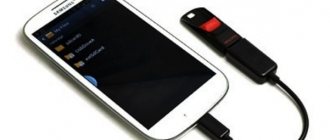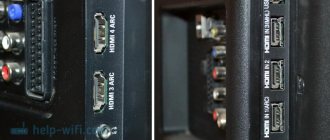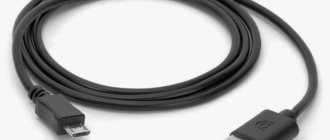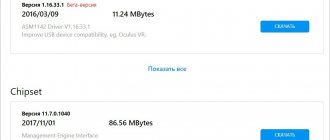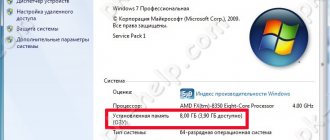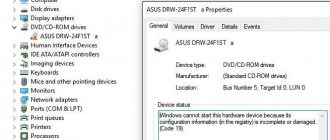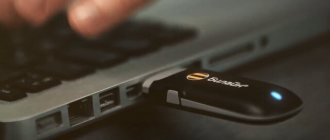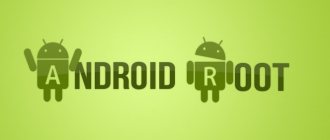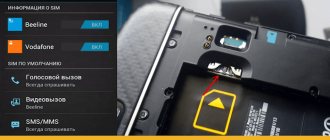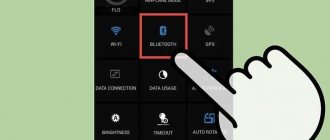Everyone faces this problem at least once: you connect your smartphone or tablet to your computer via a USB cable, but nothing happens other than charging. The computer does not see the phone or identifies it as an unknown device. The situation is common, but ambiguous, and there are quite a few reasons why it occurs. Today we will figure out what causes such problems and how to deal with them.
Causes
Software and hardware failures lead to a situation where the PC does not recognize the mobile device connected to it:
- Lack of device driver in the PC operating system.
- The driver does not match the device model.
- There is no USB driver in the system or it is malfunctioning.
- Connection with a cable that is not suitable for data transmission or is damaged.
- Malfunction of the USB socket (both on the computer and on the phone), group of sockets or USB controller on the PC.
- Failure of any of the computer equipment, blocking by static electricity.
- Error in phone system settings.
- Blocking access to the phone using security programs running on a PC (including if the gadget is infected with a virus).
- The application used to synchronize your phone and PC (if you are using) has crashed.
In case of software problems, the computer, as a rule, does not display the contents of the phone’s memory, but the device charges normally when connected to it. If the problem is due to a physical malfunction, charging most often does not work either, but there are exceptions when only the data lines do not work.
An analysis of the previous situation—what happened before the problem arose—helps outline the range of possible causes. For example:
- You have reinstalled the operating system on your computer or removed some of the drivers (the reason is that the required driver is missing).
- The phone (tablet) was no longer detected after flashing the firmware, cleaning it from viruses, deleting applications, optimizing and other manipulations with the OS (the operating system of the mobile device malfunctioned).
- The device has been subjected to mechanical damage (the USB socket is damaged) or has been repaired (after replacing parts, a driver of a different version is needed or the fault has not been completely eliminated).
- You are using a USB cable that you have never used to connect your phone to a computer before (the cable is only for charging or is damaged), etc.
Why doesn't my computer see my Samsung Galaxy when pairing?
If you have connected your smartphone to your computer via USB and are faced with the fact that it “does not see” the gadget, then this article is for you. From it you will learn about the 5 most common causes of this problem.
Incorrect connection mode
There are several modes of operation of a USB connection, that is, how a given connection will be used. When connected to a computer, a message about USB usage pops up on the phone screen. When you click on it, a settings window will open in which you can select the desired connection mode. Depending on your device model, this may be:
- charging only;
- transfer of media files;
- transfer of other files;
- using your phone as a modem.
Mobile devices running the latest version of Android are always connected to the laptop in charging mode. Therefore, if you want to use files stored in the phone’s memory and see them on the screen, when accessing through “Explorer” you need to select the “file transfer” mode.
Driver problems
When you connect for the first time via a cord, a driver is installed on your computer - a special program to control the connected phone. If the laptop does not detect a smartphone that previously had no difficulties connecting, then the problem may be with the driver. To fix this issue:
- right-click on “Start” and select “Device Manager”;
- in the window that appears, you need to find the line “Portable devices” and click on it;
- if the driver does not work, the device will be marked with an exclamation mark in the list;
- in this case, you need to right-click on the device name and click on “Update driver” in the drop-down list;
- after that – “Search for drivers on this computer”;
- click “Select driver from the list of already installed drivers”;
- In the window that opens, you need to select the required driver and click “Next”.
After the update, the exclamation mark should disappear. If this does not happen, you need to find the official website of the manufacturer of your gadget and download the software from there.
Faulty computer USB port
The laptop may not “see” the mobile device due to a faulty USB port. To check this, you need to connect the phone to a different port, if there are several of them, or to another laptop. You can also check the operation of the connector using a flash drive - if it is also not detected, then most likely the port is faulty. It is impossible to fix this on your own; repairs will be required.
Defective USB cable
If, when you connect your phone to another connector or laptop, it is still not visible, then perhaps the problem is in the wire. Cheap cables often do not have the necessary properties and quickly fail. Or they could be just for charging your phone. Therefore, to connect a mobile device and a computer, it is best to use the cable that comes with the phone. If you are sure that the USB port is working properly, the driver is installed correctly, but the computer still does not detect the smartphone, try replacing the cord.
Display of the device in Explorer is disabled
The reason that the laptop “does not see” the connected smartphone may be a lock on your gadget. It must be removed by entering a pattern key, password or fingerprint.
If your computer cannot detect your smartphone when connected via a USB cable, first check the cable and port itself. If everything is fine with them, proceed to checking the software reasons. Often a simple reboot of both devices helps fix the problem.
We quickly determine the culprit of the problem
Tracing a cause-and-effect relationship makes it much easier to localize the problem, but in about half of the cases there is nothing specific that precedes it. If this is the case for you, the following steps will help you determine where the failure occurred - in your mobile device, PC or USB cable.
- Move the cable in the area of the connectors (kinks most often form in these places) and see if the phone (tablet) is detected in the explorer or device manager of the computer. Or connect the devices with another cable that is known to work and is suitable for data transmission.
- Connect your phone to another computer, as well as another mobile device to this PC. If the phone is not detected anywhere, the problem is definitely in it. The same is the case with a computer.
- If the problem seems to be in the computer, check the phone in all USB sockets; perhaps the problem is in one or more of them (for example, only in the front group).
If you conclude that the cable is the source of the problem, simply replace it. What to do in other cases, read on.
How to properly connect Android devices to your computer via USB
If you have Windows, ignore this paragraph. If you're using macOS, install Android File Transfer.
Make sure your mobile device is turned on and connect it to your computer. Then lower the notification panel on the gadget - you will see a special switch. Click on it and select the “File Transfer” mode in the menu that appears. The names of the modes may differ depending on the Android version and device model.
After these steps, the computer should see the mobile device. On Windows it will appear in Explorer, on macOS it will appear in the Android File Transfer window. But in the case of a Mac, you will need OS X 10.5 and Android 3.0 or later versions of these OSes, otherwise it will not work.
The culprit of the failure is the phone. What to do?
If the diagnostics clearly indicate a problem with your mobile device, perform the following steps in order. After each step, check to see if the problem is resolved. If not, move on to the next one.
- Reboot your device.
- Connect your phone to your computer. Once connected, slide down the Quick Settings menu bar and make sure that the “Connect as” list doesn’t include “o” or “camera” or “media device.” Select the "USB storage" option.
- Open Android system settings (in older versions, “Options”). Go to the "Wireless Networks" section. Turn on modem mode. Or vice versa, if it is on, turn it off. In some editions of Android, this parameter controls not only the modem, but also the connection of the gadget to the PC as a drive.
- Experiment with putting your device into USB debugging mode. Open the “System” and “For Developers” sections in the settings. Uncheck or check the box next to “USB Debugging”.
- Disconnect the phone from the computer, turn it off and remove the battery from it (the phone) (of course, if it is removable). After 5 minutes, replace the battery, turn on the device and try connecting again.
- Remove applications that failed after installation. If the connection doesn't work in a particular sync app, clear its cache. If it doesn’t help, reinstall (both on your mobile device and on your PC) or try using an analogue.
- Scan your device with an antivirus.
- Reset the device's operating system to factory settings.
Phone setup
There are several parameters in Android that affect the connection with the computer. Sometimes the user chooses or changes something wrong, and it happens that the connected device operates in the wrong connection mode by default.
USB Connection Settings
Almost all modern mobile phones can connect to a computer in different modes. Often the default option is “Charging Mode”, that is, when you insert the cord into the port of the system unit and the phone socket, the second one starts charging, and does not open access to the storage. But this is easy to fix; for this you need:
- swipe the curtain down and find the item “Charging via USB”;
- tap on it, select “File transfer” (MTP).
The device will reorient itself to transfer files, and you can copy them, move them, create folders, etc.
USB Debugging Manipulations
Sometimes switching debug helps. To find it, you need to unlock the “For Developers” menu; to do this, go to “Settings” - “About phone” and click on “Build number” seven times in a row.
Attention! In MIUI, open “Settings” - “About device”, click on “MIUI version” seven times.
Return to the main menu, open the menu that appears, located at the very bottom. Scroll down a little until you come across “USB Debugging”. By default it is turned off, turn it on, it may help if the connection with the computer cannot be established.
You can also try disabling it if it is initially active. Sometimes it helps.
The culprit of the failure is the computer. What to do?
- Shut down the OS, turn off the PC from the outlet (or press the key on the power supply) and hold down the power button for 15-20 seconds. This will discharge the capacitors and remove stray static charge, which may block detection of the connected device.
- If the phone is not recognized by only one group of USB ports, open the cover of the system unit and make sure that they are connected securely. By the way, normal charging of a mobile device through the port does not mean that the second one is working properly.
- Boot the operating system. Open Device Manager and check if portable devices are listed in the equipment list, and your phone is among them. If it is present, but marked with a black arrow in a circle (disabled), right-click on the line and select the “Enable device” command from the menu.
- If there are unknown devices in the hardware list (indicated by an exclamation point in a yellow triangle), one of them may be the phone. To make sure it is him, disconnect your mobile device from USB. If the unknown device disappears from the list, then that’s it. And the reason for the failure is the lack of the required driver in the system. We will tell you below how to reinstall and where to download the driver for your phone.
- The problem with recognizing connected devices may also be due to boot failure, damaged or missing USB drivers. In this case, the exclamation marks will be in the “USB Controllers” section.
- Reinstalling drivers didn't help? Scan your computer disks with an antivirus and then temporarily disable security programs. By the way, the latter can block access to a mobile device as a storage medium if it contains suspicious or clearly malicious software. So it’s worth checking your phone for viruses too.
- Uninstall the programs whose installation caused the problem, or perform a system restore to a checkpoint created on a day before the problem occurred.
- If, in addition to the phone, the computer does not recognize other devices connected via USB - a mouse, keyboard, printer, flash drives, etc. (whether they are charged or not is not indicative), the source of the failure may be any faulty component of the system unit or something then from the periphery. You can determine the culprit at home by turning off the equipment one by one or replacing it with a known good one.
What to do if the computer does not see the device connected via Bluetooth
If you encounter visibility problems when connecting via Bluetooth, try the following measures. Do these steps one at a time and maybe one of them will help you.
1. Make sure that Bluetooth is turned on on both devices, and that visibility mode for all other devices is activated in the settings on each of them. On iOS, these settings are included in the AirDrop service, available in Control Center.
2. Place your tablet or smartphone closer to your computer.
3. Restart your computer and mobile device.
4. If the devices successfully connected to each other before, delete the saved pair in the Bluetooth settings and try to reconnect.
5. Update Bluetooth drivers on your computer.
6. Update your device operating systems to the latest versions.
How to Reinstall Mobile Device Driver and USB on Windows Computer
iPhone
- Connect iPhone to PC.
- Open the folder %CommonProgramW6432%\Apple\Mobile Device Support\Drivers (to avoid typing the command manually, copy it from here, paste it into the address bar of any folder and click the go button). It contains 2 files (out of four) with the .inf extension - usbaapl.inf and usbaapl64.inf.
- Open the context menu of each of these files and run the “Install” command.
- After installation, restart your computer.
Android
Smartphones and tablets for Android, such as Samsung, Xiaomi, Lenovo, Meizu, HTC, etc., as a rule, do not create separate folders for storing their drivers, and they are often not found on official websites so you can just download and reinstall. Therefore, to begin with, you should trust the reinstallation of the drivers already present in the system by Windows itself.
How to do it:
- Open the context menu of the problematic device in Device Manager. Select the "Update Driver" option.
- In the next window, first select automatic search for updates. If Windows does not find anything suitable, check the second item - installing and searching for drivers manually.
- Next, click “Select from the list available on your computer.” A new window will display all mobile device drivers that are already installed on the PC.
- To narrow your search, in the “Select a driver for this device” section, check “Compatible only.” Check the one that best suits your request (if there is more than one item in the list) and click “Next” to proceed to the installation.
For the driver to work correctly, restart your computer.
If reinstalling the driver already installed in the system did not help, you will have to look for something else on the Internet (with the risk of downloading a virus instead of the one you are looking for), so download them only from reliable and trusted sites, like w3bsit3-dns.com, and check with an antivirus before installation.
Drivers for the most common models of mobile gadgets are also collected in the “USB Drivers for Android” application, which is available for free download on Google Play.
USB drivers for Windows can usually be easily found on the websites of laptop or desktop PC motherboard manufacturers. Sometimes they are included in the chipset driver.
How to properly connect iOS devices to your computer via USB
Make sure your mobile device is turned on and unlocked, then connect it to your computer. The first time, iOS will ask for permission to access media files and you will need to give it.
In the case of a Windows PC, the connected iPhone or iPad will appear in Explorer in the media devices section. They will appear like regular digital cameras - you can view and copy photos and videos. To access other data, you will have to use iTunes, which is available on the Apple website. The registration procedure will not cause any difficulties; you just need to follow the prompts of the setup wizard.
On Mac things are a little simpler. iTunes is already included with macOS, so it will launch automatically when you connect your iPhone or iPad. Interaction with content is carried out through a media harvester, but iTunes is not needed to access media files. The standard Photos application will help you view and import them, which also launches automatically when iOS devices are connected.
If the phone is not recognized in firmware mode
The fact that the computer and phone do not see each other in fastboot mode is indicated by the message “Waiting for device” that appears in the firmware program. Most often, this error occurs due to the lack of a mobile device driver in the system, so first of all, do what is written above - reinstall the driver or download and install it again.
If it doesn't help:
- Make sure that you follow the instructions for working with the firmware installation program exactly and that it is running as an administrator.
- Check if USB debugging is enabled on your smartphone (if not, enable it), and the device itself is in bootloader mode. If this mode is blocked, find instructions online for unlocking the bootloader specifically for your device model.
- Connect the phone to the rear USB socket as short as possible and with a known good cable, without using any adapters or hubs.
- Your phone may not support USB 3 (blue socket), so only connect it to USB 2.0 (black sockets).
- Install all released Windows updates on your computer.
If the problem persists even after doing this, try flashing the phone on another PC. And better - with a different version of the operating system.
When the problem is a broken physical interface
It is advisable not to use faulty physical interfaces, especially on a mobile gadget, at all (do not load them with current to avoid worsening the breakdown), even if the phone or tablet retains the ability to charge through them. You can organize content transfer either wirelessly (Wi-Fi, bluetooth) or through cloud services that are available on both devices. In particular, iTunes and iCloud for Apple technology, Google Drive, Yandex Disk, Dropbox, Microsoft OneDrive and many others - for everyone.
Cloud services are convenient to use for transferring photos, videos, music, documents and other types of files. To synchronize contacts on Android and PC, the capabilities of Gmail are sufficient. And to control your phone directly from your computer, you can install an application like MyPhoneExplorer (consists of 2 parts - for the phone and for the PC), which supports both wired and wireless connections of devices without requiring driver installation. Very comfortably.
In short, there is always a way out and it is often much simpler than it seems at first glance.
Other articles on the site
- 3 ways to connect your mobile phone to your computer
- Internet on a computer via phone (USB, Bluetooth, Wi-Fi)
- Why the computer won't turn on and how to determine what's broken
- Why does an Android phone get hot: normal and faulty
